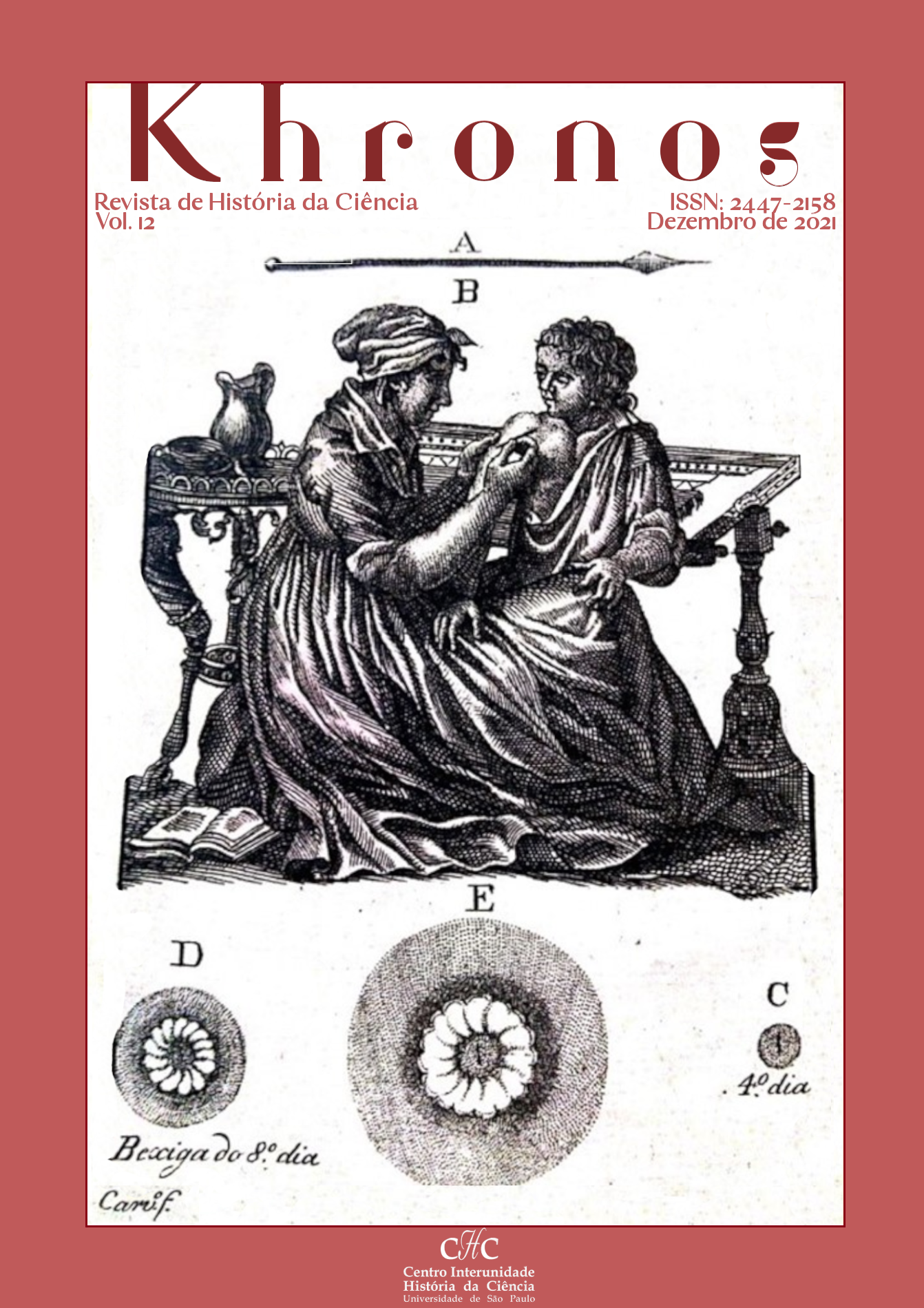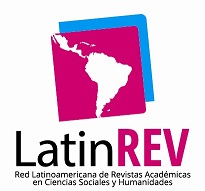Data final do Mecanismo de Anticítera
DOI:
https://doi.org/10.11606/issn.2447-2158.i12p136-152Palavras-chave:
Época do mecanismo de Anticítera, Data final do mecanismo de Anticítera, Ponteiro Metônico, Dispositivo de pin and slot, Preditor de eclipse, Anomalia lunarResumo
Este artigo apresenta as investigações de Carman (2017), que demonstram a data de 5 de março de 193 A.E.C., ou um mês anomalístico antes como sendo a última vez que a manivela do Mecanismo de Anticítera foi acionada, algum tempo antes do naufrágio. Para argumentar sua proposta este pesquisador considerou duas datas - ambas correspondentes ao ano de 205 A.E.C., - já obtidas a partir dos dados analisados nos mostradores posteriores do aparato; Metônico (parte superior) e Saros (parte inferior), alguns ponteiros identificados por tomografias computadorizadas, e restos de alguns dos fragmentos para fundamentar sua investigação.
Downloads
Referências
A. Jones, A Portable Cosmos: Revealing the Antikythera Mechanism, Scientific Wonder of the Ancient World (Oxford: Oxford University Press, 2017).
C. Carman and J. Evans, “On the Epoch of the Antikythera Mechanism and Its Eclipse Predictor,” Archive for History of Exact Sciences, 68, 2014.
D. de Solla Price, “Gears from the Greeks: The Antikythera Mechanism – A Calendar Computer from ca. 80 B.C.,” Transactions of the American Philosophical Society, 66(7), 1975, pp. 1–19, deduced with a probably incorrect argument that the date is in the 1980s bce; C. Carman and J. Evans, “On the Epoch of the Antikythera Mechanism and Its Eclipse Predictor,” Archive for History of Exact Sciences, 68, 2014.
Fred Espenak’s catalog of the eclipses of solar Saros series 44 at <https://eclipsewise.com/solar/SEsaros/SEsaros044.html>
G. Weinberg, V.R. Grace, G. Roger Edwards, H.S. Robinson, P. Throckmorton and E.K. Ralph, “The Antikythera Shipwreck Reconsidered,” Transactions of the American Philosophical Society, 55(3), 1965, pp. 3–48; A. Cristopoulou, A. Gadolou and P. Bouyia (eds), The Antikythera Shipwreck: The Technology of the Ship, the Cargo, the Mechanism (Athens: National Archaeological Museum, 2012); N. Kaltsas, E. Vlachogianni and P. Bouyia (eds), The Antikythera Shipwreck: The Ship, the Treasures, the Mechanism (Athens: National Archaeological Museum, 2012).
J. Steele, “Eclipse Prediction in Mesopotamia,” Archive for History of Exact Sciences, 54, 2000.
M. Anastasiou, J.H. Seiradakis, C. Carman and K. Efstathiou, “The Antikythera Mechanism: The Construction of the Metonic Pointer and the Back Dial Spirals,” Journal for the History of Astronomy, 45, 2014.
M. Anastasiou, Y. Bitsakis, A. Jones, X. Moussas, A. Tselikas and M. Zafeiropoulou, “The Front Cover Inscription,” Amagest, 7(1), 2016.
M. Edmunds, “An Initial Assessment of the Accuracy of the Gear Trains in the Antikythera Mechanism,” Journal for the History of Astronomy, 42, 2011, pp. 307–20 (see p. 316).
P. Iversen, “The Calendar on the Antikythera Mechanism and the Corinthian Family of Calendars,” Hesperia: The Journal of the American School of Classical Studies at Athens, 86, 2017.
T. Freeth and A. Jones, “The Cosmos in the Antikythera Mechanism,” ISAW Papers, 4, 2012, <http://dlib.nyu.edu/awdl/isaw/isaw-papers/4/>.
T. Freeth, A. Jones, J.M. Steele and Y. Bitsakis, “Calendars with Olympiad Display and Eclipse Prediction on the Antikythera Mechanism,” Nature, 454, 2008.
T. Freeth, Y. Bitsakis, X. Moussas, J.H. Seiradakis, A. Tselikas, H. Mangou, M. Zafeiropolou, R. Hadland, D. Bate, A. Ramsey, M. Allen, A. Crawley, P. Hockley, T. Malzbender, D. Gelb, W. Ambrisco and M.G. Edmunds, “Decoding the Ancient Greek Astronomical Calculator Known as the Antikythera Mechanism,” Nature, 444, 2006, pp. 587–91.
T. Freeth, “Eclipse Prediction on the Ancient Greek Astronomical Calculating Machine Known as the Antikythera Mechanism,” PLoS ONE, 9(7), 2014, p. e103275.
Downloads
Publicado
Edição
Seção
Licença
Copyright (c) 2021 Beatriz Bandeira

Este trabalho está licenciado sob uma licença Creative Commons Attribution-NonCommercial 4.0 International License.
Autores que publicam nesta revista concordam com os seguintes termos:
- Autores mantém os direitos autorais e concedem à revista o direito de primeira publicação, com o trabalho simultaneamente licenciado sob a Licença Creative Commons Attribution na modalidade "Atribuição-NãoComercial 4.0 Internacional" (CC BY-NC 4.0) que permite o compartilhamento do trabalho com reconhecimento da autoria e publicação inicial nesta revista.
- Autores têm autorização para assumir contratos adicionais separadamente, para distribuição não-exclusiva da versão do trabalho publicada nesta revista (ex.: publicar em repositório institucional ou como capítulo de livro), com reconhecimento de autoria e publicação inicial nesta revista.
- Autores têm permissão e são estimulados a publicar e distribuir seu trabalho online (ex.: em repositórios institucionais ou na sua página pessoal) a qualquer ponto antes ou durante o processo editorial, já que isso pode gerar alterações produtivas, bem como aumentar o impacto e a citação do trabalho publicado (Veja O Efeito do Acesso Livre).
- Qualquer dúvida ou reclamação sobre direitos autorais devem ser direcionadas ao Conselho Editorial o qual apreciará e se manifestará conforme as diretrizes do Committee on Publications Ethics (COPE).






